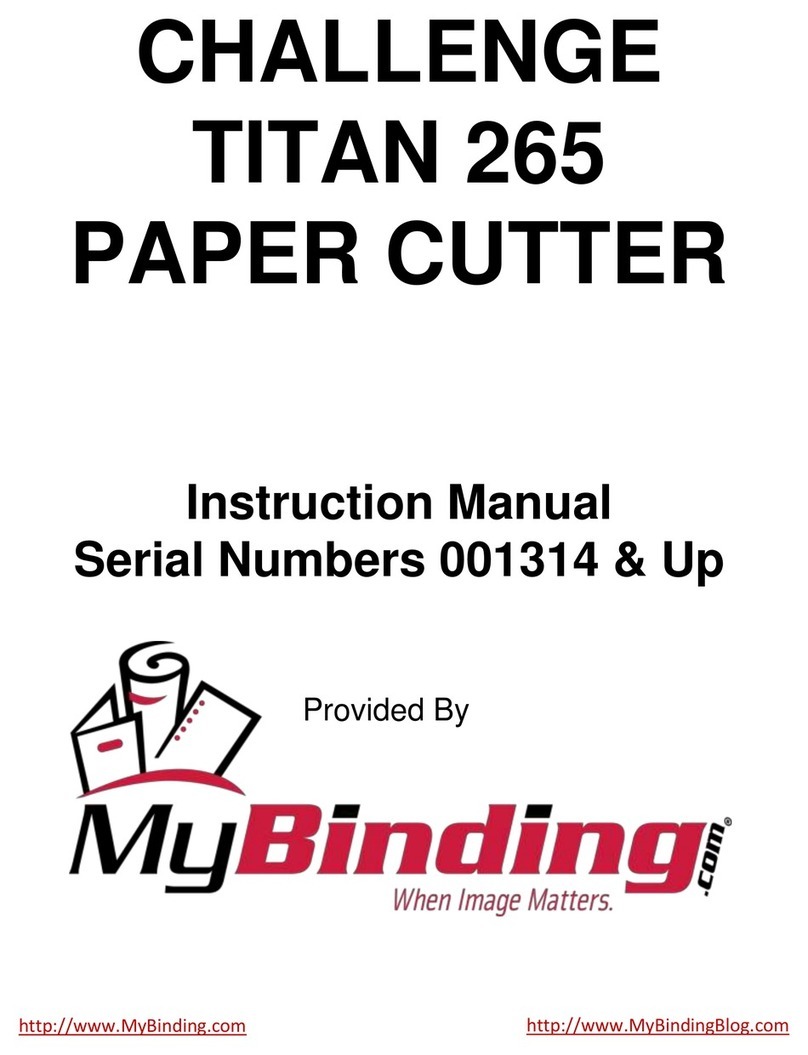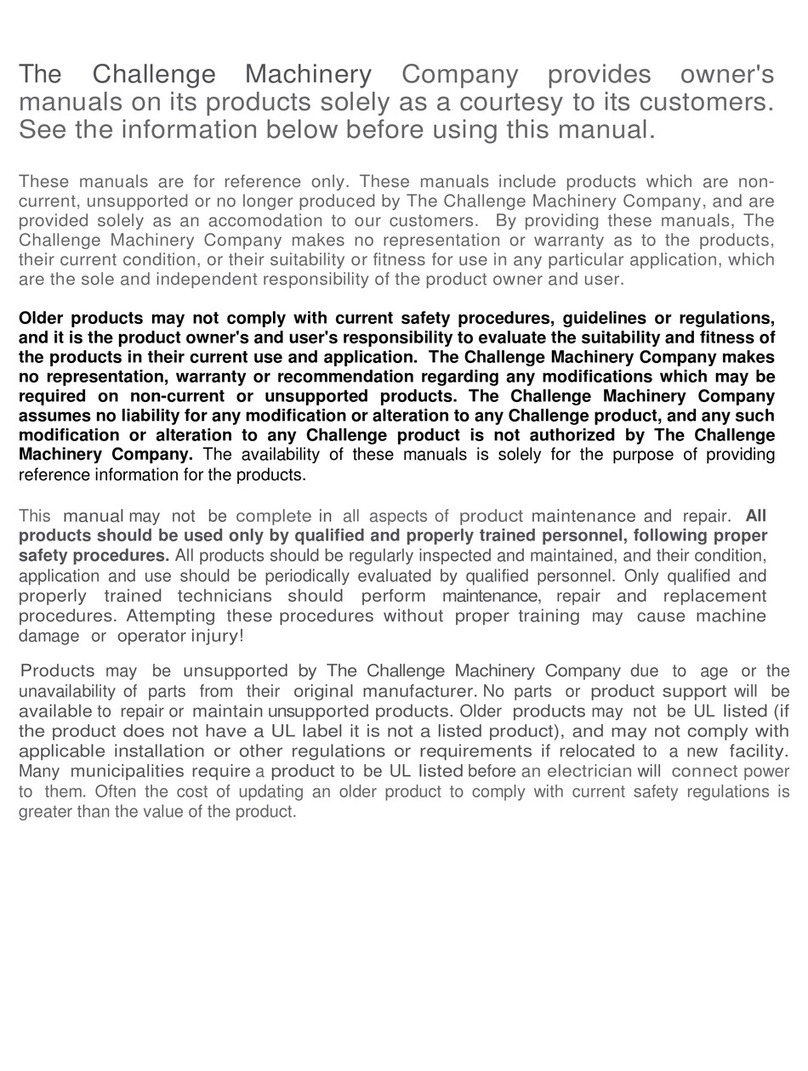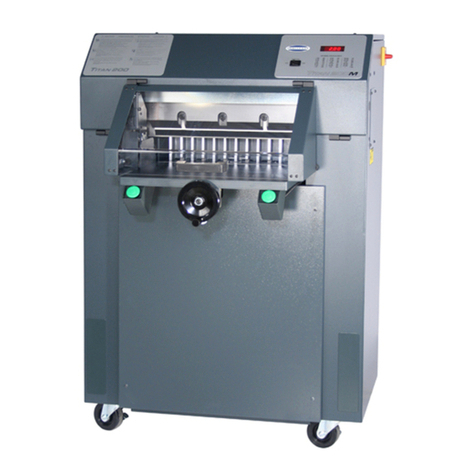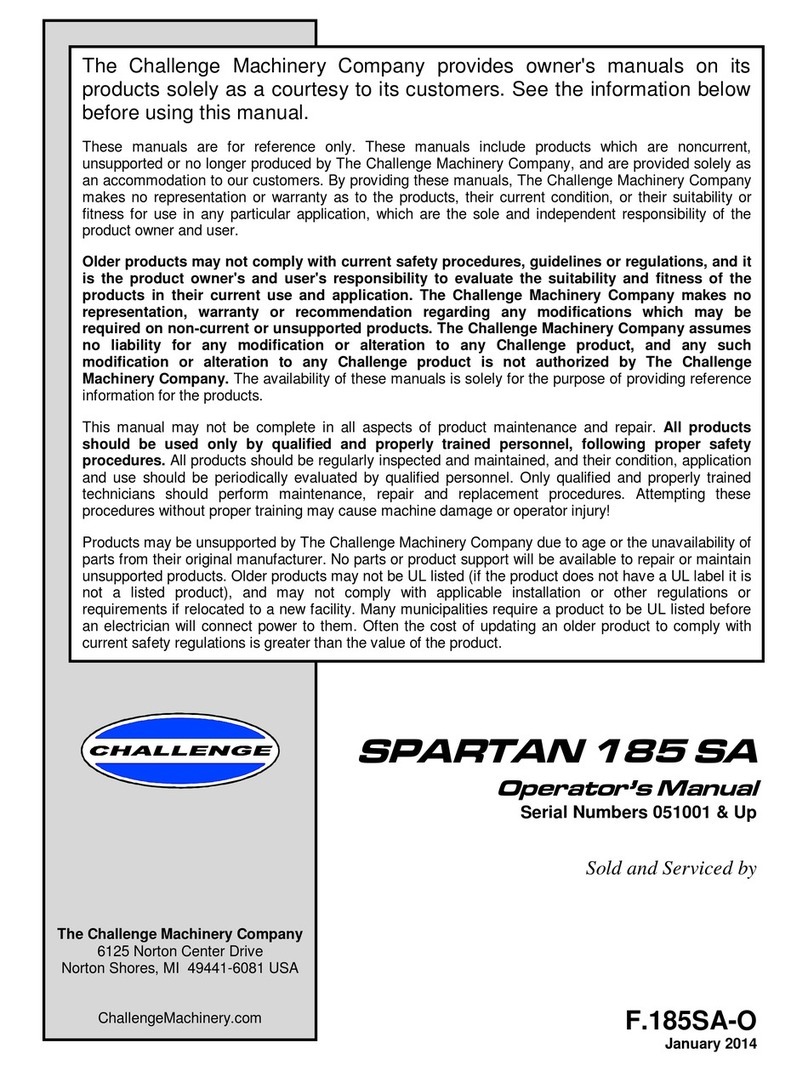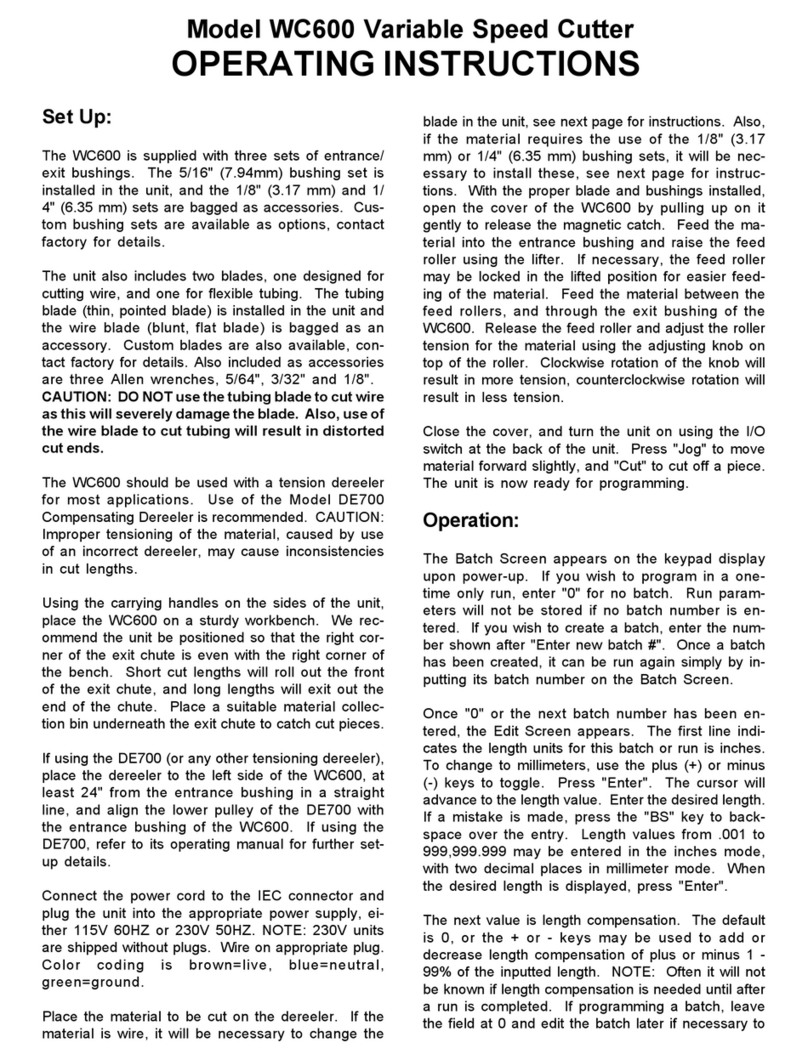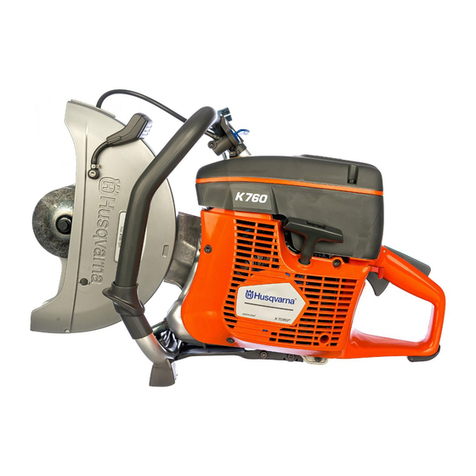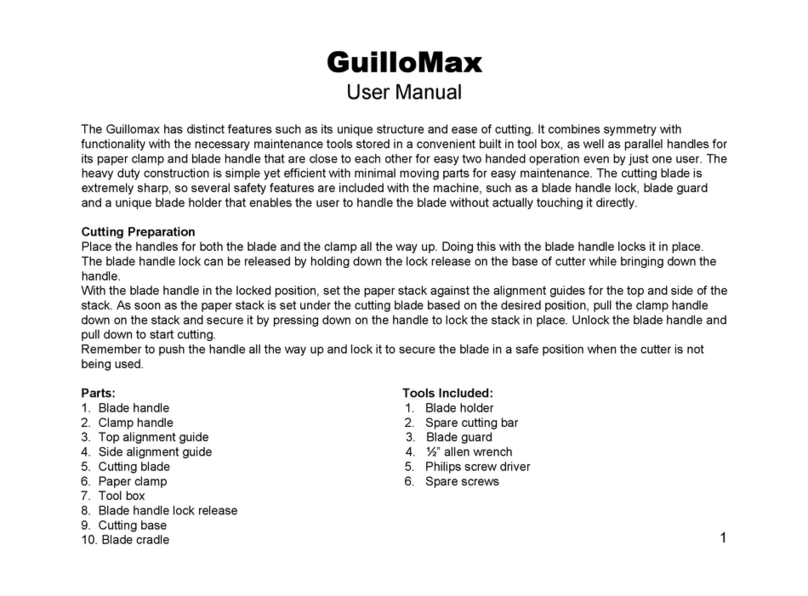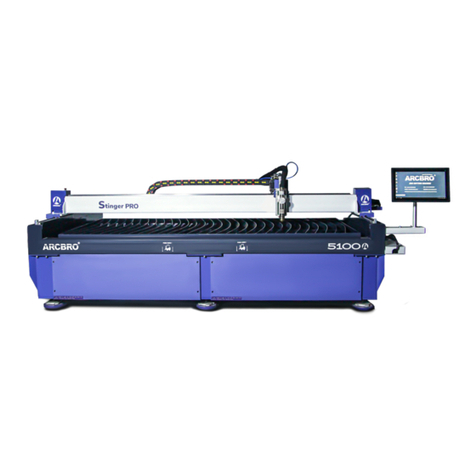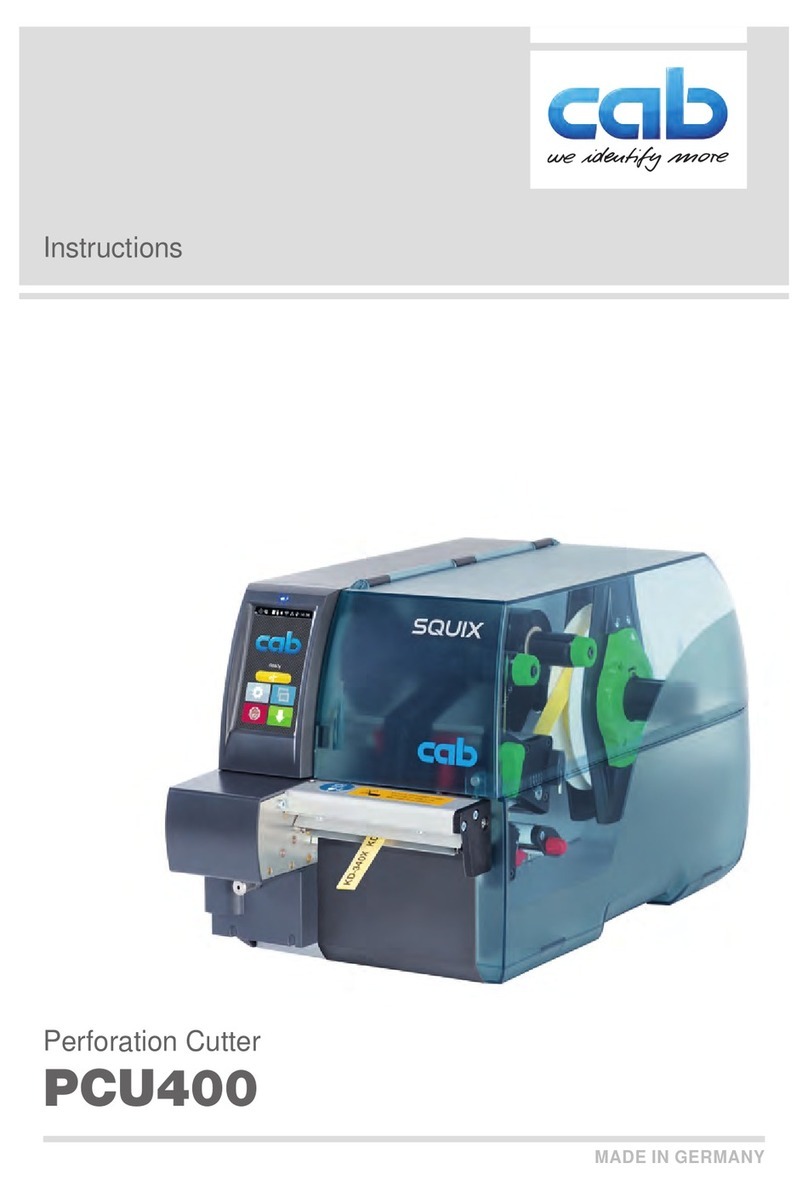
1.0 Introduction
4
TABLE OF CONTENTS
1.0 Introduction.......................................................................................................................................3
2.0 Safety................................................................................................................................................6
2.1 Precautions ..................................................................................................................................6
2.2 Power Lockout Procedure............................................................................................................6
2.3 Warning Label Definitions ............................................................................................................7
3.0 Maintenance Guide...........................................................................................................................9
3.1 Routine Maintenance (All Models) .............................................................................................10
3.1.1 Weekly................................................................................................................................10
3.1.2 Monthly................................................................................................................................10
3.1.3 Yearly..................................................................................................................................10
3.2 Cleaning (All Models).................................................................................................................10
3.2.1 Table...................................................................................................................................10
3.2.2 Display Panel......................................................................................................................10
3.2.3 Machine Exterior.................................................................................................................11
3.3 Lubrication (All Models)..............................................................................................................11
3.3.1 Clamp..................................................................................................................................11
3.3.2 Backgauge Lead Screw and Guide Shaft...........................................................................11
3.4 Accessing the Electrical Panel (All Models)...............................................................................12
3.5 Adjustments................................................................................................................................13
3.5.1 Squaring the Backgauge (All Models) ................................................................................13
3.5.2 Backgauge Accuracy Adjustment (Models: SA and A).......................................................14
3.5.3 Backgauge Accuracy Adjustment (Models: AEP)...............................................................16
3.5.4 Knife Bar Gib Adjustments (All Models)..............................................................................16
3.5.5 Knife Leveling Adjustment (All Models)..............................................................................16
3.5.6 Backgauge Gib Adjustments (All Models) ..........................................................................18
3.5.7 Lead Screw Collars (Models: SA and A) ............................................................................18
3.5.8 Line Light Adjustment (All Models) .....................................................................................19
3.5.9 Front Guard Switch Adjustment (All Models)......................................................................20
3.5.10 Knife/Clamp Sequence Adjustment (Models: A and AEP)...............................................20
3.5.11 Clamp-Up Limit Switch Adjustment (Models: A and AEP)................................................21
3.5.12 Knife-Up Limit Switch Adjustment (All Models) ................................................................22
3.5.13 Knife-Down Limit Switch Adjustment (All Models)............................................................23
3.5.14 Re-engaging the Knife Pull-Down Gear (All Models) .......................................................24
3.6 Troubleshooting..........................................................................................................................26
4.0 Parts Lists.......................................................................................................................................28
4.1 Main Asm. – Backgauge Drive (Models: SA, 120/230V, 50/60 Hz)...........................................28
4.2 Main Asm. – Backgauge Drive (Models: A, 120/230V, 50/60 Hz) .............................................30
4.3 Main Asm. – Backgauge Drive (Models: AEP, 120/230V, 50/60 Hz) ........................................32
4.4 Main Asm. – Knife Drive (All Models).........................................................................................34
4.5 Main Asm. – Bottom Side Electrical (Models: SA, 120V, 60 Hz)...............................................36
4.6 Main Asm. – Bottom Side Electrical (Models: A/AEP, 120V, 60 Hz) .........................................38
4.7 Main Asm. – Bottom Side Electrical (Models: SA, 230V, 60 Hz)...............................................40
4.8 Main Asm. – Bottom Side Electrical (Models: A/AEP, 230V, 60 Hz) .........................................42
4.9 Main Asm. – Bottom Side Electrical (Models: SA, 230V, 50 Hz)...............................................44
4.10 Main Asm. – Bottom Side Electrical (Models: A/AEP, 230V, 50 Hz).......................................46
4.11 Main Asm. – Clamp (Models: SA, 120/230V, 50/60 Hz)..........................................................48
4.12 Main Asm. – Clamp (Models: A/AEP, 120V, 60 Hz) ................................................................50
4.13 Main Asm. – Clamp (Models: A/AEP, 230V, 50/60 Hz)...........................................................52
4.14 Main Asm. – Knife (All Models)................................................................................................54
4.15 Main Asm. – Front Shield (All Models).....................................................................................56
4.16 Main Asm. – Backgauge (All Models)......................................................................................58
4.17 Main Asm. – Top Side Elec. (Models: SA, 120/230V, 50/60 Hz).............................................60
4.18 Main Asm. – Top Side Elec. (Models: A/AEP, 120/230V, 50/60 Hz).......................................62
4.19 Main Asm. – Covers and Labels (Models: SA, 120/230V, 50/60 Hz)......................................64






